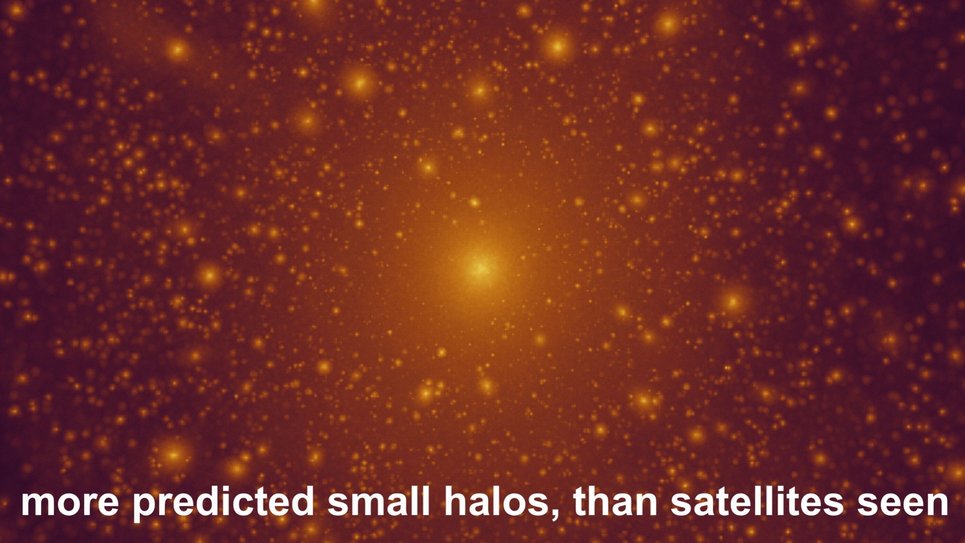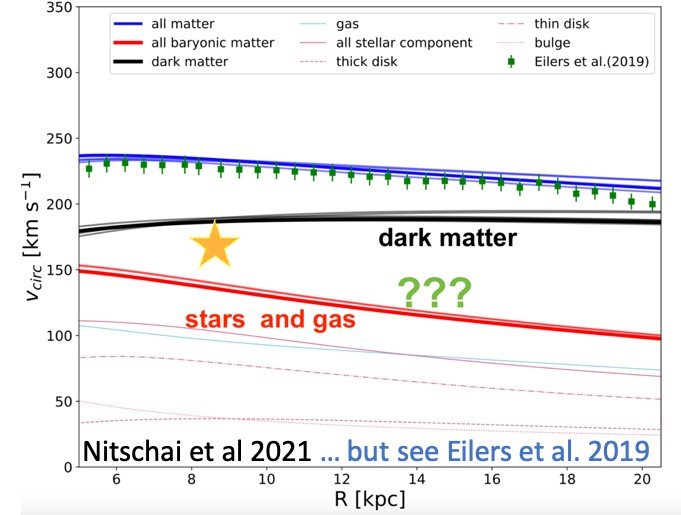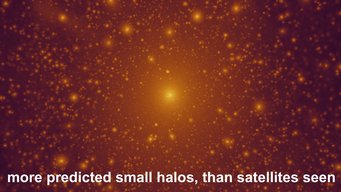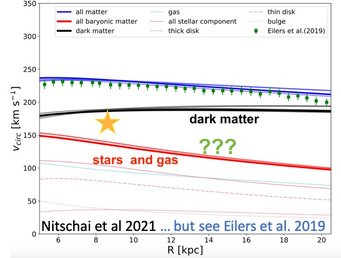The Milky Way as a Laboratory for Galaxy Formation
Over the last half century, astrophysics has developed a highly successful paradigm (LCDM) for galaxy formation, in which dark matter (and dark energy) dominate, mass fluctuations grow with time to form the mass concentrations in which gas cools to for stars and ultimately galaxies. Most open astrophysical questions about this picture revolve around “what happens on small scales”, where the Milky Way is an ideal laboratory to find out.

- How is DM distributed within galaxies? Does the dark matter density rise towards the galaxy center of have a constant density core? How much dark matter around us? We’d like to know to guide laboratory dark matter experiments.
- When does galaxy formation fail? The LCDM scenario predicts vast numbers of low-mass dark matter concentrations (halos). These may be too feeble to cause gas to sink to the center and form stars? I.e. they may fail to produce a galaxy, or make a galaxy with only a dozend stars. The immediate vicinity of the Milky Way is the best place for us to find out.
- What processes shape large disk galaxies? In the Milky Way we see that a star’s age, chemical composition and orbit are intricately linked. These patterns should reflect the past formation and evolution of the Milky Way, and we’d like to understand this.


